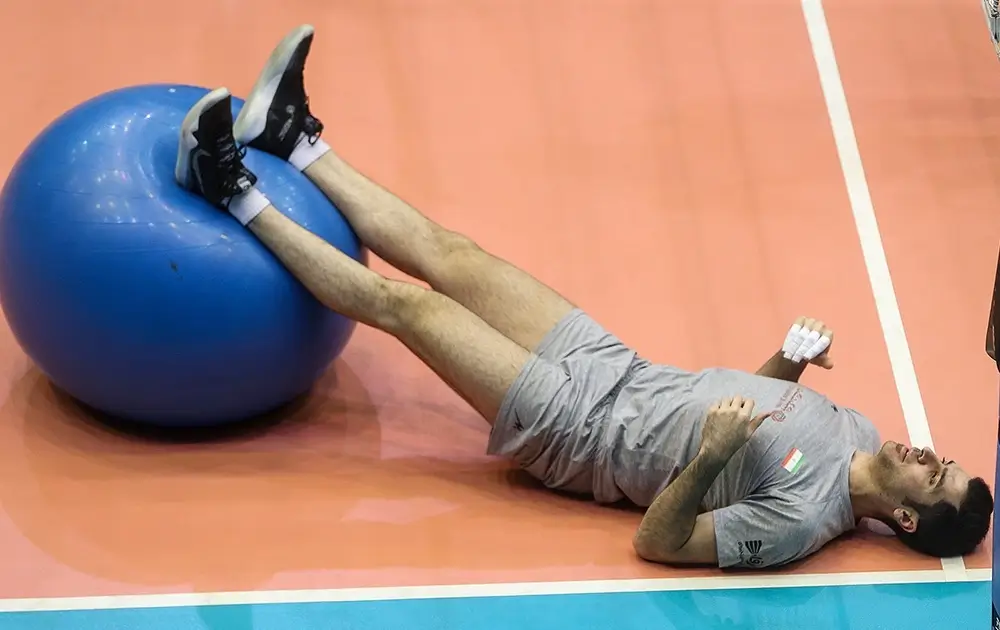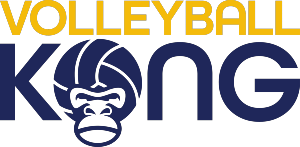Last Updated: February 26, 2024
In the dynamic world of volleyball the opposite hitter plays a pivotal role. This position demands not only physical prowess but also mental sharpness and strategic thinking.
To thrive as an opposite hitter a specialized training regimen tailored to enhance these unique skills is essential.
Key Physical Attributes for an Opposite Hitter

Ideal opposite hitters typically possess a commanding physical presence which is a blend of several key attributes.
Height and Reach
While height often around 6 feet or more provides a natural advantage it’s not the only decisive factor. A player’s reach and arm span are also significant in effective blocking and spiking.
Taller players naturally have a longer reach which can be an asset in both offense and defense.
Strength
Having strength in the body is beneficial in delivering powerful spikes. It’s not only about the ability to hit the ball hard but it also involves having the strength to maintain proper form and control throughout the game.
A rounded strength training routine should include exercises that mimic volleyball movements, along with workouts aimed at building overall strength.
Speed and Agility
The ability to react quickly to the setters and adjust to opposing team attacks is reliant on speed and agility for a hitter. Quick footwork is key not only for reaching the ball, but also for smoothly transitioning between offensive and defensive positions.
Incorporating agility drills that focus on movements and quick turns can greatly enhance these skills.
Endurance
Volleyball matches can be physically demanding, requiring players to sustain their energy levels and performance. Building endurance is key in maintaining peak performance throughout the game during prolonged rallies.
Recommended Read: Tactical Tips for Opposite Hitters this Year
Core Training Exercises
A strong core forms a foundation for volleyball players enabling them to deliver spikes and execute effective blocks. A strong core enhances balance and stability, which are also essential for directional changes and maintaining control while airborne.
Exercises, like planks, Russian twists and medicine ball throws have an impact on improving core stability and power. It’s also beneficial to include exercises such as dead bug, hanging leg raises and stability ball exercises to enhance core strength and coordination. These aspects play a part in every facet of a hitters game.
Upper Body Training
Upper body training is vital for delivering spikes and precise blocks. To promote strength and prevent injuries you should aim to strike a balance between developing both the muscles in the front and back of the body.
Incorporate exercises like push ups, bench presses and dumbbell rows into your workout routine. You can also try variations of these exercises to target muscle groups. For instance, decline presses focus on chest development, while lat pull downs strengthen your back. These exercises not only help build muscle but also enhance endurance and power in your body – both essential for repetitive actions like spiking and blocking.
Lower Body Workouts
When it comes to lower body workouts the ability to jump high and move quickly is critical for a hitter. Focus on developing leg power through exercises such as squats, lunges and plyometric drills.
To improve your explosiveness and speed you should include exercises, like box jumps, jump squats and agility ladders in your training routine. These workouts not only strengthen your legs but also enable dynamic and powerful gameplay on the court.
Also Read: 5 Common Mistakes to Avoid as an Opposite Hitter
Flexibility and Mobility
When it comes to volleyball players fitness, flexibility and mobility are often overlooked compared to strength and endurance training. However they are crucial for executing movements on the court and in preventing injuries.
Increasing Flexibility
To enhance flexibility, you need to incorporate stretching into your training program. Dynamic stretching before workouts and static stretching after can significantly improve flexibility.
Practicing yoga or pilates can also bring benefits as they not only enhance flexibility but also focus on breath control and body awareness. These aspects can be particularly helpful during high pressure moments in the game.
Enhancing Mobility
For maintaining a range of joint movement, mobility exercises are essential. This is especially true for volleyball players who need to perform a range of movements during a match. Improving the mobility of your hips, shoulders and ankles through exercises can enhance performance and reduce the likelihood of injuries.
Related: Impactful Strategies for Opposite Hitters
Conclusion
To excel as a hitter in volleyball you need to take an approach that includes physical training, mental preparation, proper nutrition and adequate recovery. Dedicate yourself to this routine with persistence and determination and you’ll be well on your way to achieving success in this demanding position.
Just maintain effort and a balanced mindset on the court. Stay focused and motivated, but most of all enjoy every step of your journey!
